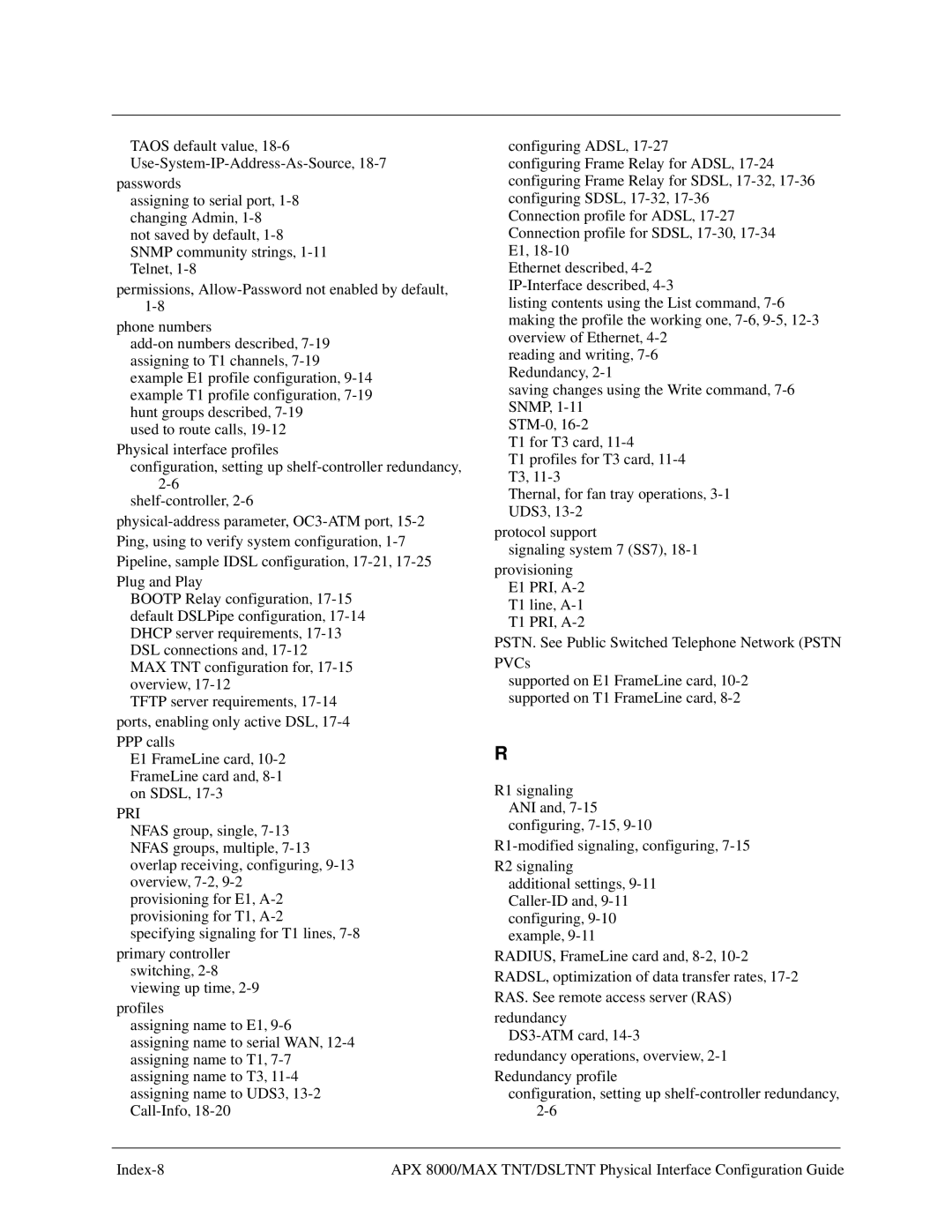
TAOS default value,
passwords
assigning to serial port,
not saved by default,
permissions,
phone numbers
used to route calls,
configuration, setting up
Plug and Play
BOOTP Relay configuration,
MAX TNT configuration for,
TFTP server requirements,
E1 FrameLine card,
PRI
NFAS group, single,
provisioning for E1,
primary controller switching,
profiles
assigning name to E1,
configuring ADSL,
configuring Frame Relay for ADSL,
Connection profile for ADSL,
Ethernet described,
listing contents using the List command,
reading and writing,
saving changes using the Write command,
T1 for T3 card,
T1 profiles for T3 card,
T3,
Thernal, for fan tray operations,
protocol support
signaling system 7 (SS7),
E1 PRI,
T1 line,
T1 PRI,
PSTN. See Public Switched Telephone Network (PSTN PVCs
supported on E1 FrameLine card,
R
R1 signaling ANI and,
R2 signaling additional settings,
RADIUS, FrameLine card and,
configuration, setting up
APX 8000/MAX TNT/DSLTNT Physical Interface Configuration Guide |
